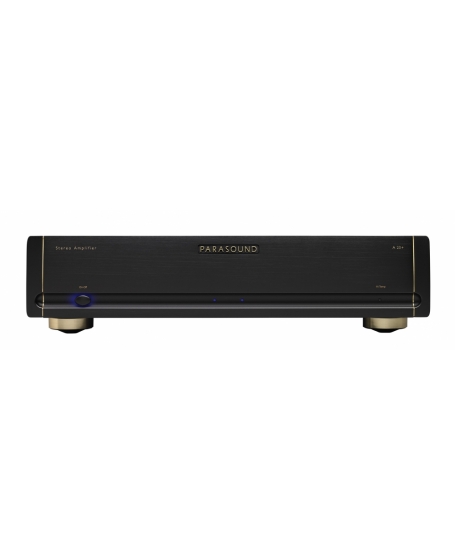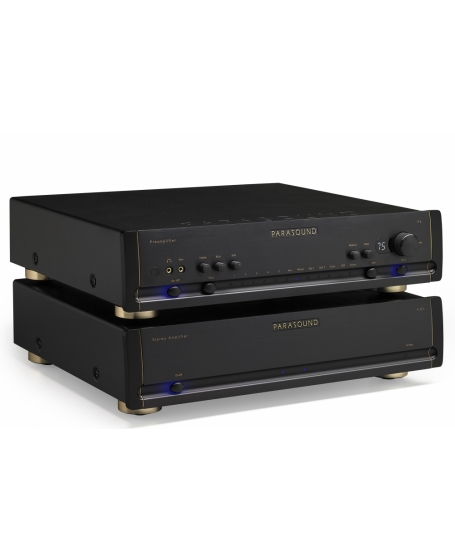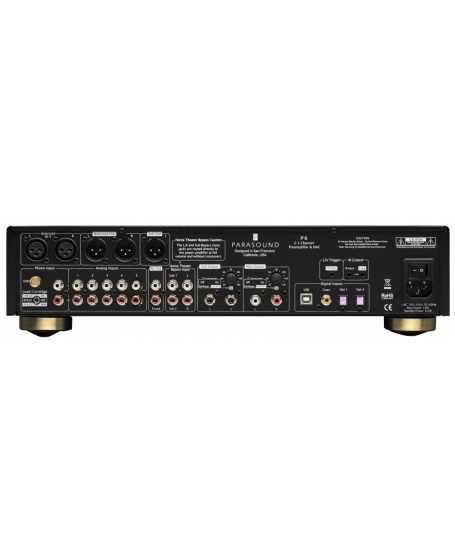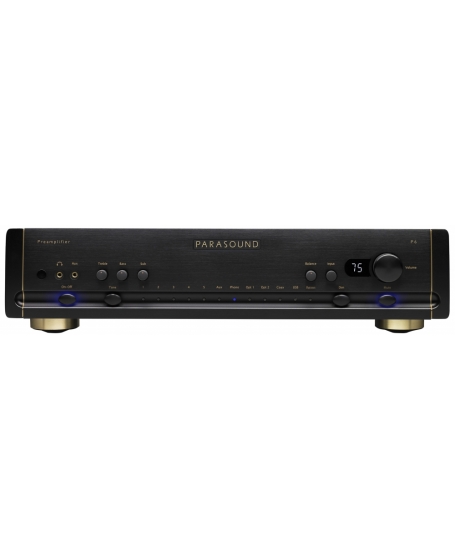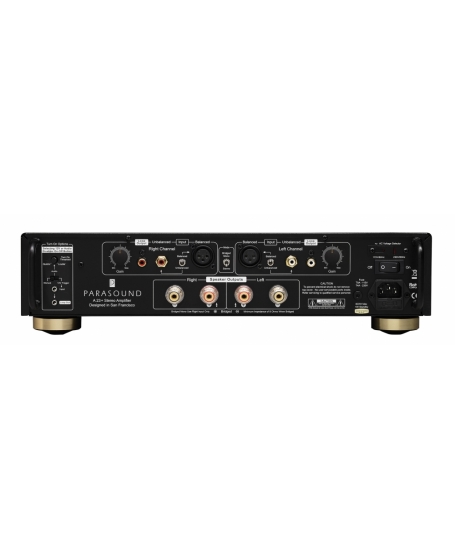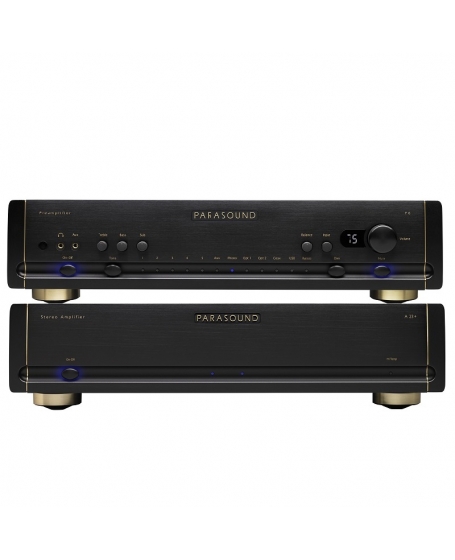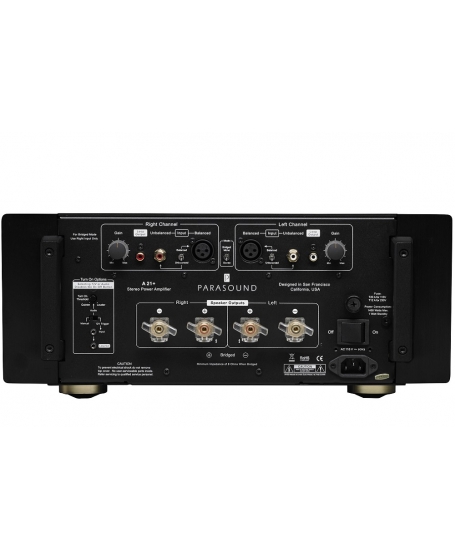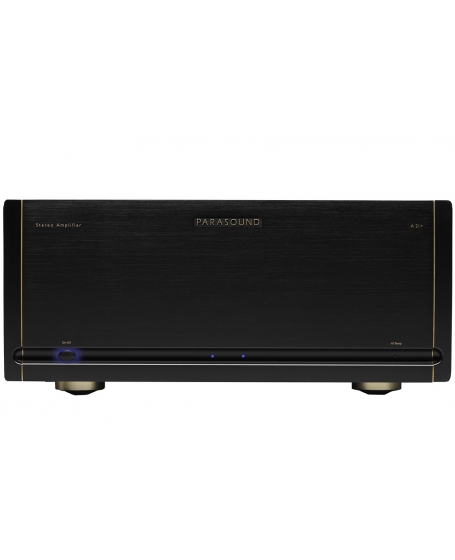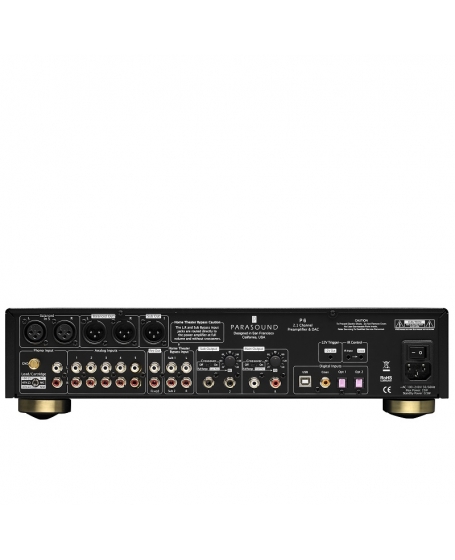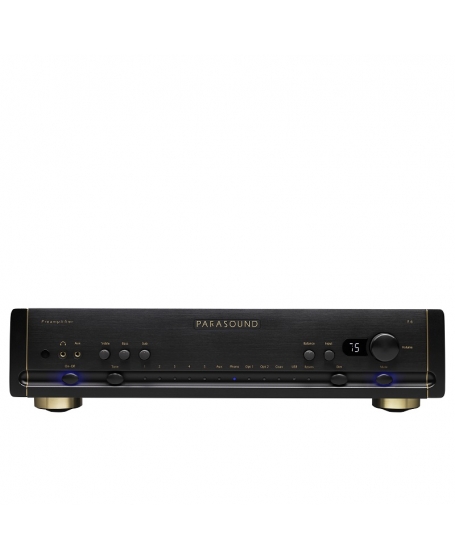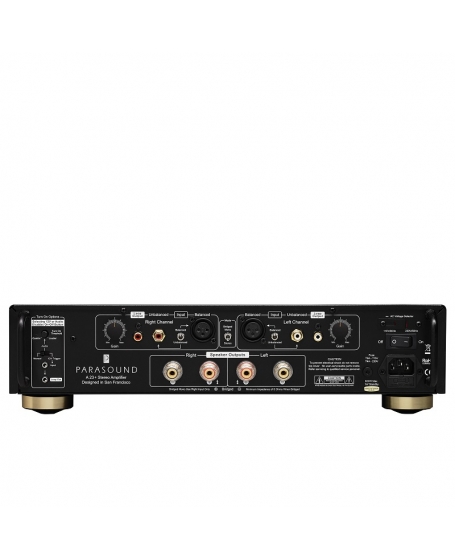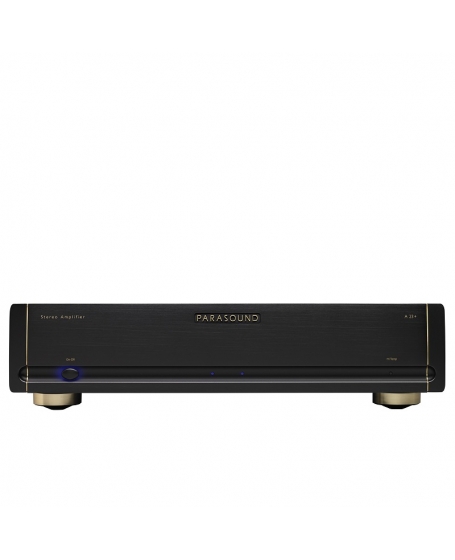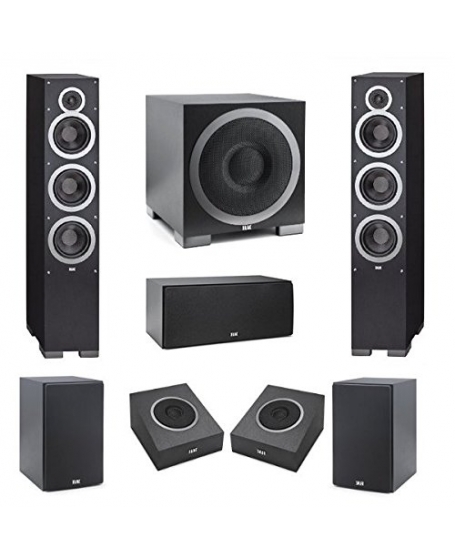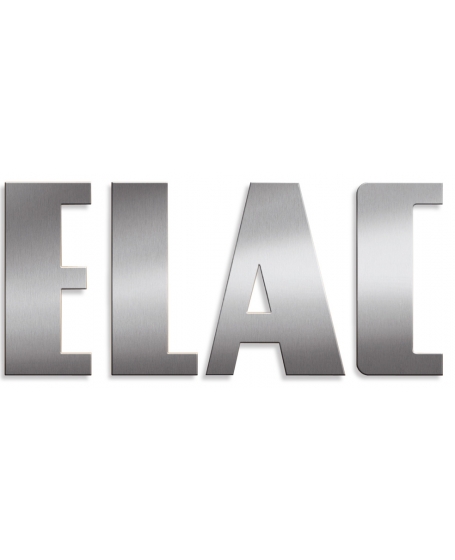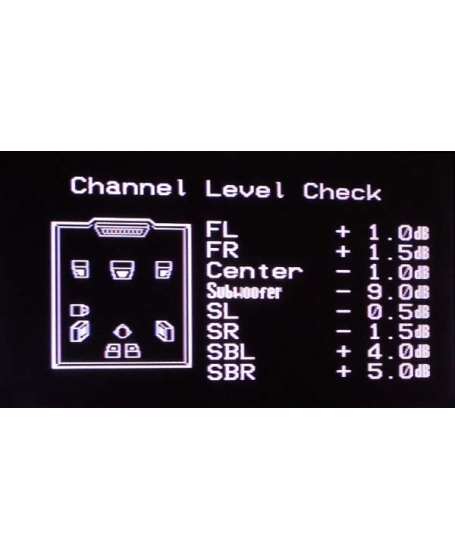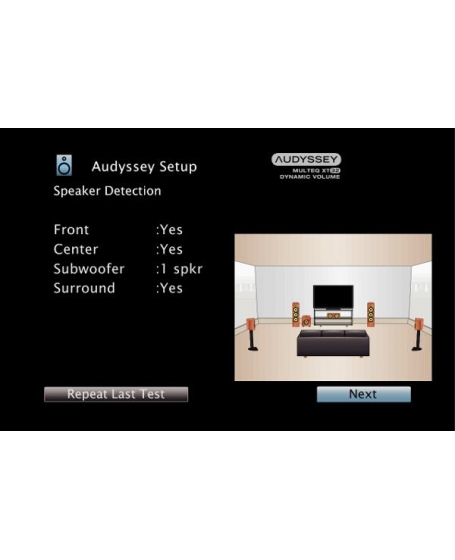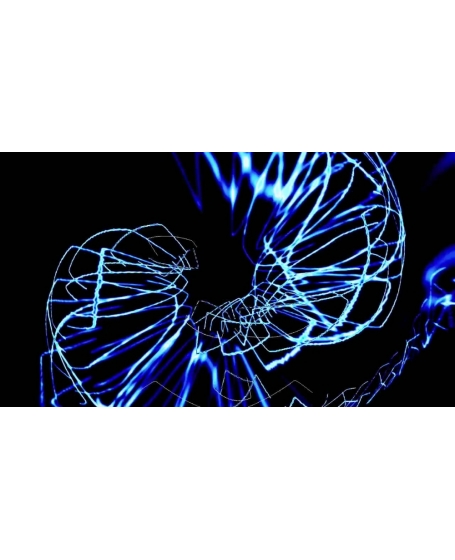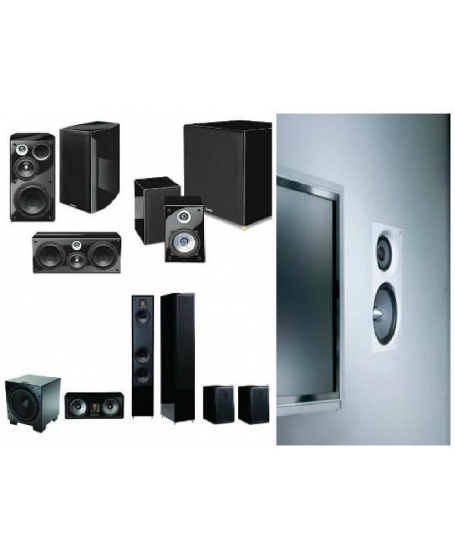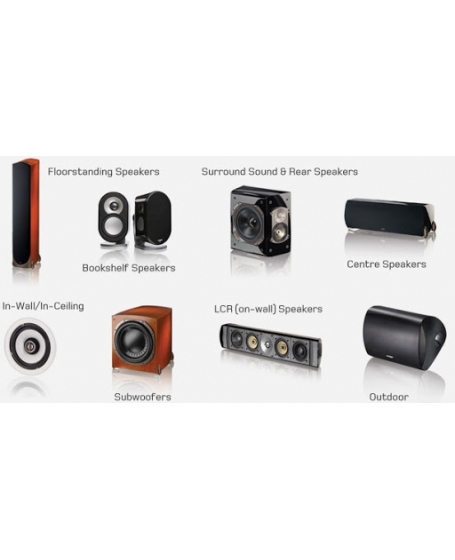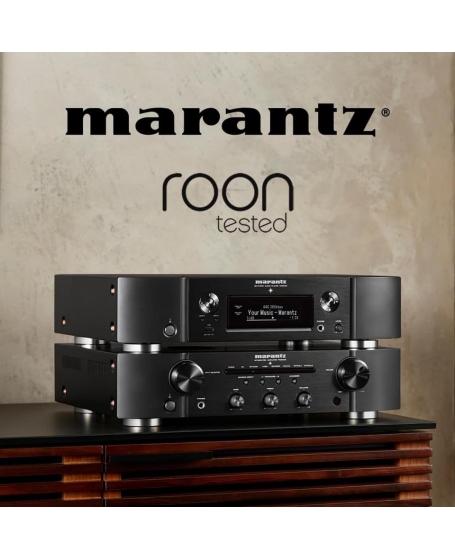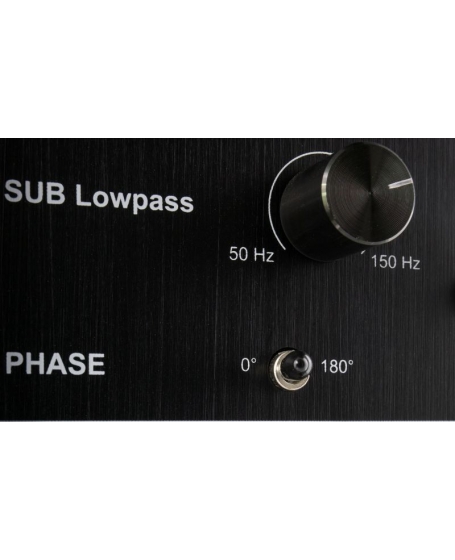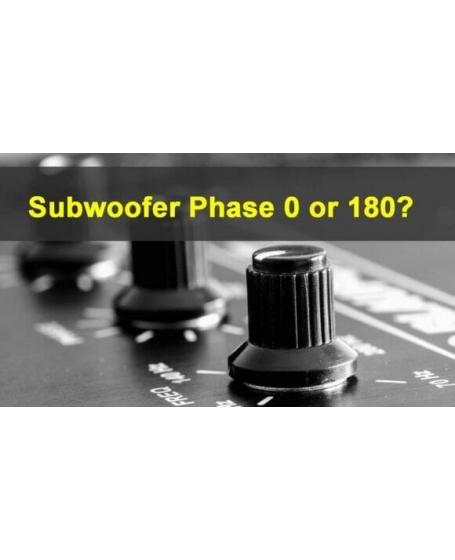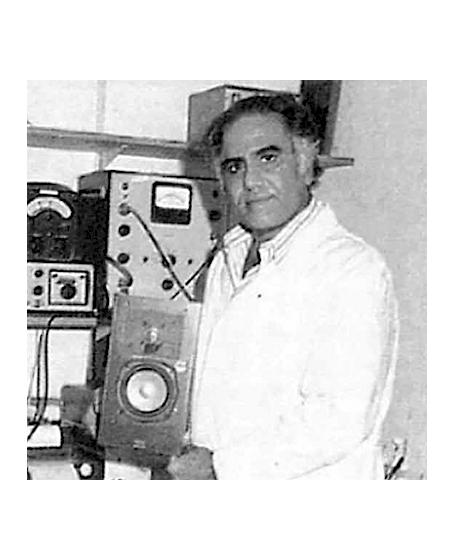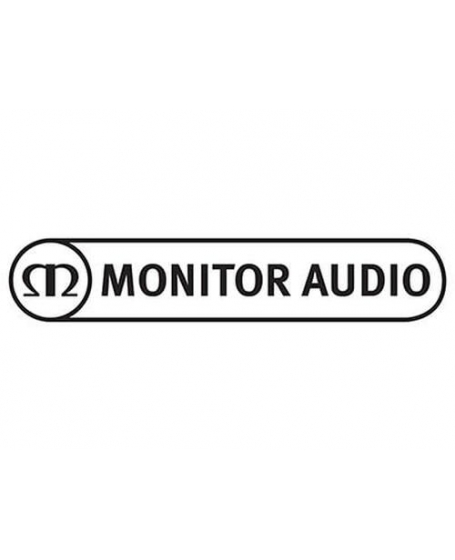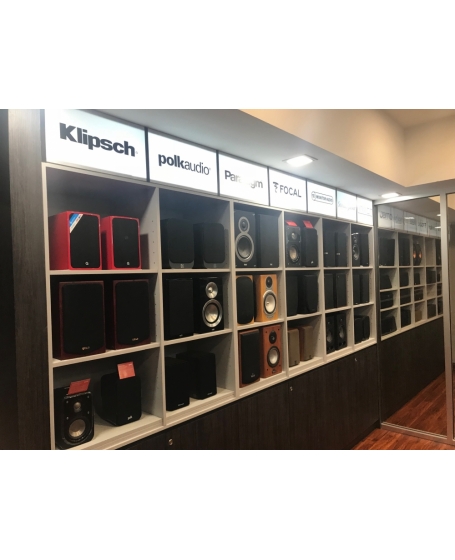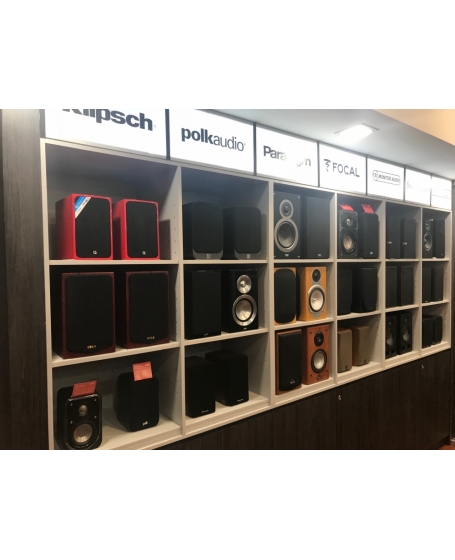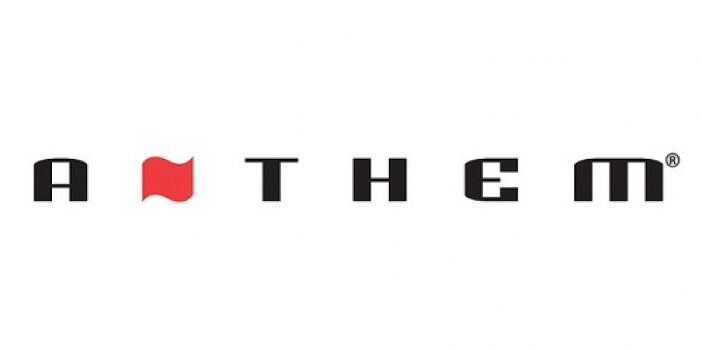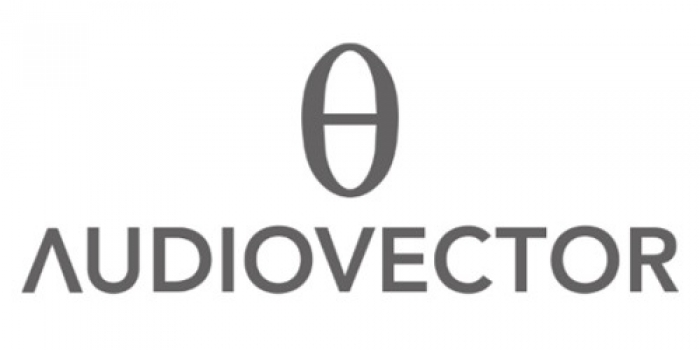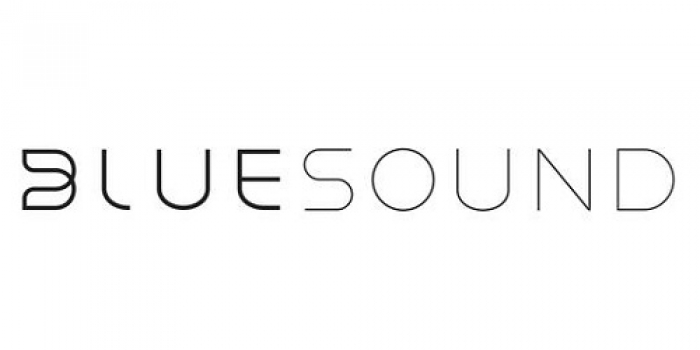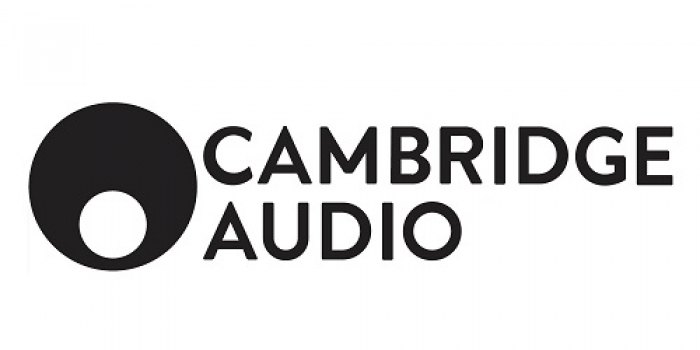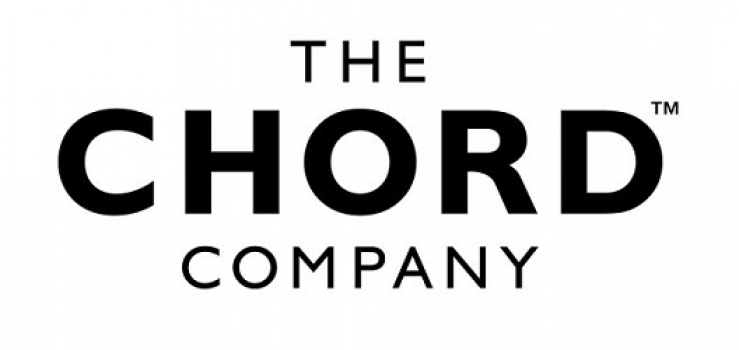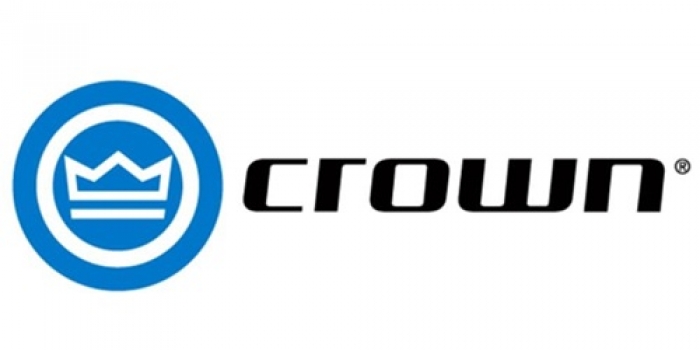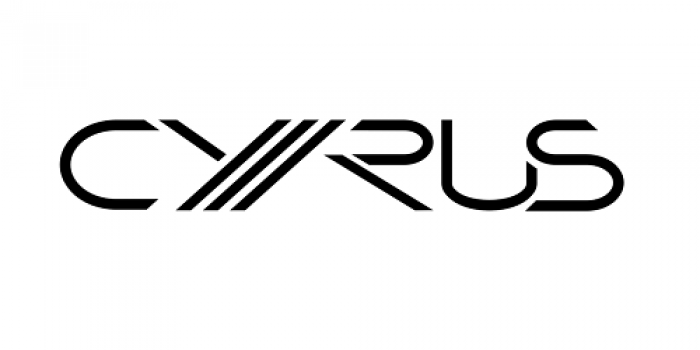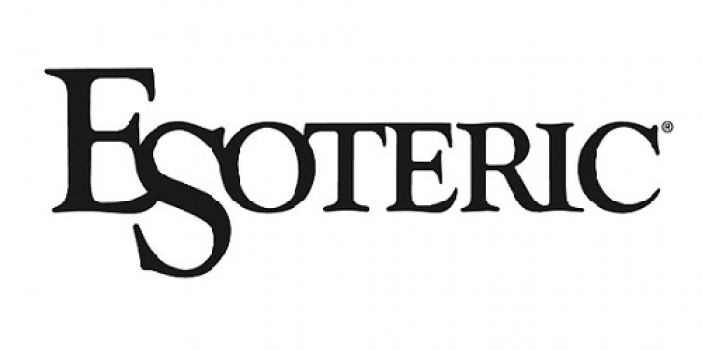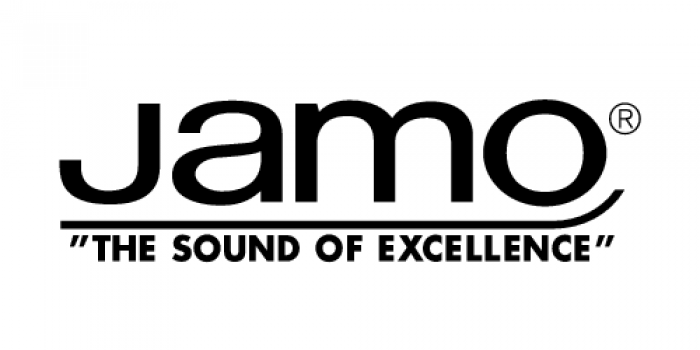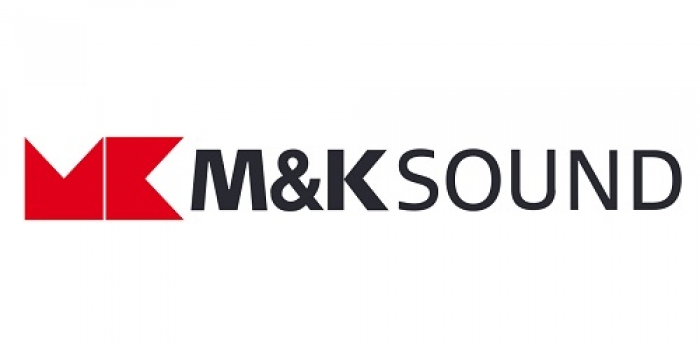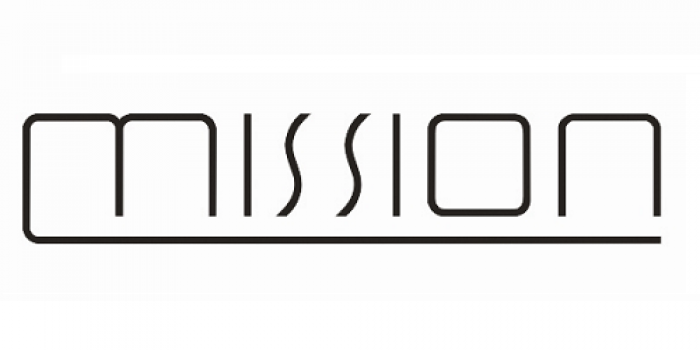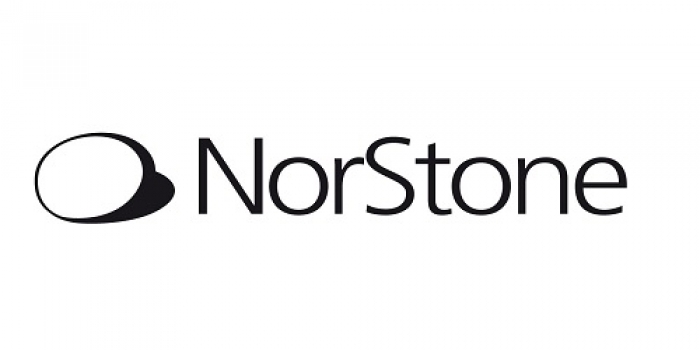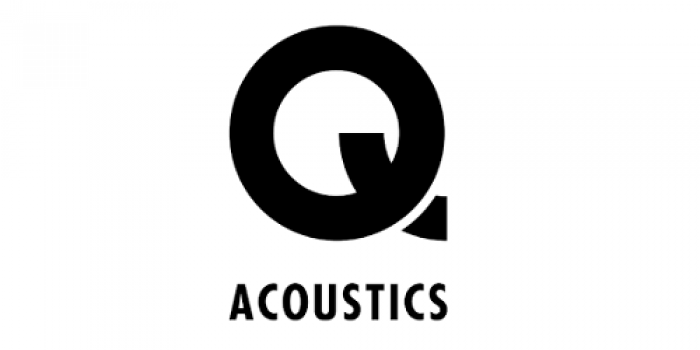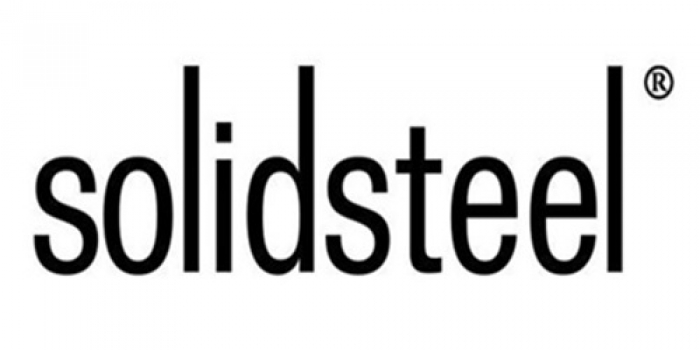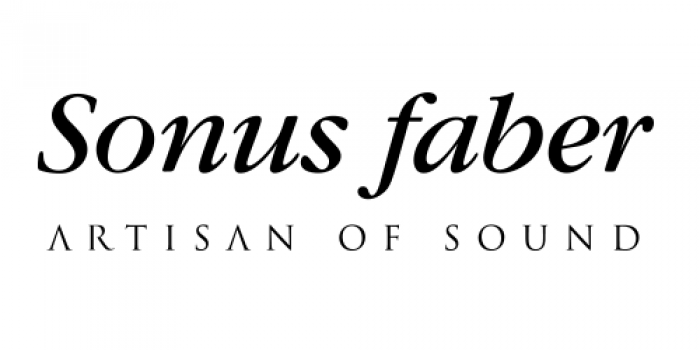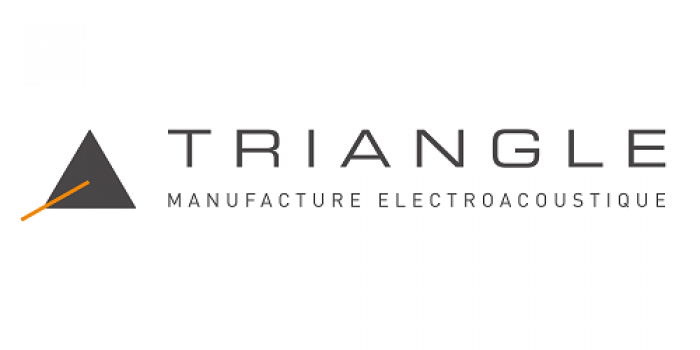Parasound Halo P6 Preamplifier & Parasound Halo A23+ Power Amplifier
SKU: Parasound Halo P6+Parasound Halo A23+Parasound Halo A23+ Stereo Power Amplifier
Halo P6 2.1 Channel Preamplifier & DAC
Designed for Serious Two-Channel Music Listening
Parasound does it again, surpassing all expectations with its brand new Parasound P 6. This advanced 2.1 channel preamplifier has been designed for the highest performance for serious two channel music listening and ease of integration with a surround sound system. Based on the high performance preamplifier section of the brand new Halo HINT 6 integrated amplifier, the P 6 offers a plethora of added features compared to its predecessor, the Halo P 5, along with improved sound and exceptional ease-of-use.
Ready for today's hi-res digital music files and excelling with vinyl playback, too, the P 6 packs an advanced ESS Sabre32 Reference DAC to decode a wide range of digital music files via its digital inputs. It also includes a very high quality built-in MM/MC phono stage with three-position load/cartridge selector switch as well as a high-current headphone stage built around the top grade Texas Instruments TPA6120A headphone amplifier chipset.
The new feature set includes a Burr-Brown volume control with easy-to-read front panel display. It also adds an upgraded USB receiver with plug-and-play functionality for Windows and Mac, a second optical input, increased phono gain, greater channel separation, and some pleasing refinements to its appearance compared to the P 5 and original model Halo Integrated. Among the other new features are a Favorite volume memory with remote control button, increased phono stage gain for lower output cartridges, improved channel separation and balance tracking, a ball-bearing supported solid aluminum volume knob, and a programable default turn on volume setting.
"Pure Sonic Magic"
"Together, the Parasound P 6 and A 23+ are dynamite," raves Roy Ervin Solstad, Stereo+ (Norway), January 2019. "Pure sonic magic with brilliant dynamics, delicious midrange and impressive resolution. To get such good sound for the price of this duo seems almost unnatural. One incredibly appealing preamp-amplifier package from Parasound."
New Burr-Brown Volume Control
The Parasound Halo P 6 is packed full of technical advancements. The volume control replaces the motorized potentiometer and sliding mechanical contacts used on the Halo P5 and original-model Halo Integrated with a Burr-Brown electronically controlled analog resistor ladder volume control. Technical advancements in the new volume control offer a more distinct sound stage by increasing the dynamic range, lowering the noise floor, improving left-right separation and maintaining absolute left-right channel tracking at any volume level.
The solid aluminum volume knob is supported on ball bearings to rotate with exceptional smoothness, while the dimmable two-digit display shows volume level in increments from 0-99. This advanced volume control enables users to program both a default turn-on volume level as well as a favorite-volume level with remote control button.
ESS Sabre32 Reference DAC
The P 6 uses a proven ESS Sabre32 Reference DAC to decode a wide range of digital music files via two optical, one coaxial, and a new upgraded USB receiver – now with plug-and-play support for Windows 10 in addition to Mac. The asynchronous USB 2.0 input supports PCM up to 384 kHz/32-bit, native DSD256, and DoP DSD bit streams. The coax and optical inputs accept PCM up to 192 kHz/24-bit.
Phono Stage with Three-Position Selector Switch
The Halo P 6 is equipped with a high quality phono stage. The Phono input has a three-position load/cartridge selector switch. MM is for moving magnet cartridges. It provides a 47k ohm load and the appropriate gain for all MM cartridges. This is the most common cartridge type.
The MC 100 ohm setting is for most moving coil cartridges. It provides the higher gain required for even very low output MC cartridges and a 100 ohm load that is ideal for the majority of MC cartridges.
The MC 47k ohm setting provides the appropriate gain for MC cartridges with an alternative 47k ohm load. You can try both the 100 ohm and 47k ohm settings to see which sounds best in your system. The MC 47 k ohm setting is also the load which Grado recommends for its MI (moving iron) cartridges.
Audiophile Headphone Stage
The P 6 is equipped with a dedicated high quality current-feedback headphone amplifier based on the top grade Texas Instruments TPA6120A. This superior design allows for an extremely high slew rate preventing odd order distortions which are responsible for listening fatigue. The virtually instantaneous response to musical dynamics doesn't raise the noise floor or degrade the s/n ratio like typical headphone amps. The headphone amp circuit was also designed with a low 10 ohms output impedance and high gain to drive headphones rated up to 600 ohms.
The headphone jack accepts a 1/8" (3.5mm) stereo mini plug. The Left and Right Speaker Outputs and the Preamp output jacks (RCA and XLR) are muted whenever a headphone plug is inserted into this jack. The L and R Record out jacks are not muted.
Balanced and Unbalanced Subwoofer Outputs
The P 6 provides one XLR connector and two RCA jacks for one or more subwoofers. The two unbalanced and one balanced subwoofer outputs all carry the same mono signal. You can select whether the mono signal is full range or crossed over according to the frequency you select for the Low Pass crossover. The Balanced XLR Sub Output has the same signal as either Sub 1 or 2 Output RCA jack. Balanced has 6dB higher gain. Both RCA 1 and 2 outputs and the XLR output can be connected at the same time.
If you have two subwoofers and want them to operate in stereo you can connect them to the Left and Right Main Output jacks instead of to the Sub Output jacks which are mono. In this case you would need to set the High Pass crossover switch to Off. With this configuration the front panel Sub Level control does not function.
High-Pass and Low-Pass Crossovers
The P 6 is equipped with adjustable low-pass and high-pass crossovers. Crossovers are filters that allow certain frequencies to pass while blocking other frequencies. A low pass filter permits only low frequencies to pass and blocks high frequencies. A high pass filter permits only high frequencies to pass and blocks low frequencies. 80 Hz is the best starting frequency for both the High Pass and Low Pass crossovers if you are using a subwoofer and are not certain where to set the crossover frequency. If you are not using a subwoofer, set the P 6 Main Output Crossover switch to its Off position. The crossover settings affect both RCA and XLR Main Outputs.
The Low Pass crossover allows only low frequencies to be output from the P 6 Sub Output jacks. If your subwoofer has a built-in crossover that cannot be switched off, set it to its highest frequency to minimize the negative effects on bass response from filtering in the P 6 and again in the subwoofer.
The P 6 High Pass Crossover for the Main Outputs (both XLR and RCA) allows you to block low frequencies from going to your main L and R speakers. This can be particularly useful if you are using small speakers (typically with woofers of 6.5"/165mm or smaller) and you have a subwoofer. The most common settings are between 50 Hz and 80 Hz. If you are not using a subwoofer you will get better results by turning the P 6 High Pass Crossover off or setting it below 40Hz. If you want your L and R speakers to operate full range with no frequencies blocked set the High Pass crossover switch to its Off position.
Theater Bypass Input
The Home Theater bypass input jacks allow you to easily incorporate the P 6 into a surround sound system while also using it as a dedicated two-channel amplifier for hi-fi listening. The Bypass input works by passing the incoming L, R and Sub channels directly through to the L, R and Sub output jacks. None of the P 6 circuits or controls has any effect on the bypassed signals. The P 6 is thus transparent to the Left, Right and Subwoofer(s) outputs from your surround sound processor or receiver and passes them on to your amplifier(s) and Subwoofer(s). In order to use the P 6 Bypass function your surround sound receiver must have line level preamp output jacks.
The P 6's Bypass function is a direct connection between its L, R and Sub Bypass Input jacks and its Main and Sub output jacks. All controls are excluded from the bypass signal path.
Your surround sound receiver or processor's bass management menu settings and volume control function normally when you are listening to surround sound with the Left, Right and Sub channels routed through the P 6. Please see the owner's manual for your surround sound receiver or processor to set the proper speaker levels, distance and bass management. If you have already calibrated your surround sound system, there is no need to recalibrate your system after adding the P 6. Don't forget that the volume control on the P 6 does not work when the Bypass Input is selected. Use the volume control on your surround sound AVR or processor.
New Features (Changes from the P 5)
- ESS Sabre32 Reference DAC replaces the original Burr-Brown DAC
- USB input is now capable of DSD & 384kHz/32-bit PCM (up from 96Khz/24-bit)
- Burr Brown analog resistor ladder volume control
- Dimmable front panel volume display
- Upgraded USB receiver with "plug and play" operation with Windows 10
- An additional optical input (2 total)
- Ball bearing supported solid aluminum volume knob
- Programable default turn on volume setting
- Favorite volume memory with remote control button
- Increased phono stage gain for lower output cartridges
- Improved Left/Right channel separation and balance tracking
- Sand blasted metal end caps replace plastic end caps on the P 5
- Updated cosmetics with subtle gold highlights
Preamp and DAC Features
- ESS Sabre32 Reference DAC (ES9018K2M)
- Asynchronous USB 2.0 supports PCM up to 384kHz/32-bit
- USB input decodes Native DSD64, DSD128, DSD256 and DoP DSD
- Coax and optical inputs accept PCM up to 192kHz/24-bit
- Analog bass management with high & low pass crossovers
- Home theater bypass input for surround sound integration
- Front panel subwoofer level control
- Dedicated high current headphone amplifier (TI TPA6120)
- Phono input for MM, MC and MI with 100 Ω or 47k Ω load
- Front panel Aux input with automatic +12 dB gain stage
- 5 pairs RCA line level Analog inputs
- 1 pair XLR balanced Analog input
- Balanced XLR and RCA left and right preamp outputs
- 1 balanced XLR and 2 RCA subwoofer outputs
- Bass & treble controls with relay bypass from remote or front panel
- Rear panel IR input and IR loop output jacks
- 12 Volt trigger output
- Back-lit remote control with discrete buttons
- 0.5w standby power consumption meets Energy Star & EU specs
Halo A 23+ Stereo Power Amplifier
This Halo Shines More Beautifully Than Ever
Parasound already brings listeners heavenly sound, but its halo now shines more beautifully than ever with its brand new version of the Halo A 23 two-channel power amplifier. Meet the Halo A 23+ and enjoy performance upgrades for cleaner, ultra-low distortion sound, revised front panel cosmetics, and a revised rear panel layout offering enhanced features, too.
"Together, the Parasound P 6 and A 23+ are dynamite," raves Roy Ervin Solstad, Stereo+ (Norway), January 2019. "Pure sonic magic with brilliant dynamics, delicious midrange and impressive resolution. To get such good sound for the price of this duo seems almost unnatural. One incredibly appealing preamp-amplifier package from Parasound."
Impressive Performance Upgrades
The performance upgrades are impressive, beginning with a big 25% to 30% increase in output power compared to the previous model. The A 23+ delivers 160 watts-per-channel at 8 ohms compared to 125 watts-per-channel for the A 23, 240 watts-per-channel compared to 225 watts-per-channel at 4 ohms, and 500 watts in bridged mono mode compared to 400 watts with the A 23.
The performance of a power amplifier is highly dependent on the quality of its power supply, and Parasound went the extra mile with the A 23+, which boasts a 10% to 15% larger main power transformer compared to the previous model A 23. Transformer size has been increased from 1.0 to 1.1kVA, and the filter capacitance increases 20-30% from 40,000 uF for the A 23 to 54,400 uF for the new A 23+. You'll hear the advantages of these upgrades as the A23+ presents lower distortion at full power.
Other performance upgrades include tweaked input circuits for improved crosstalk specs (70 dB at 20 kHz compared to 63 dB) and upgraded internal gold on gold audio connections, resulting in a cleaner signal path that's also more reliable.
Rear Panel Layout and Features Upgrades
The rear panel of the A 23+ has been revised in terms of layout and new features. It boasts upgraded speaker terminals, using identical terminals to the HINT 6 integrated amp, a new jack/terminal layout with more space and more clear text/labels, and a master "Vacation" AC switch. The 2.5mm trigger jacks of the A 23 have been replaced with 3.5mm jacks, and the audio trigger circuit has been updated for better low signal reliability.
Revised Halo Front Panel Cosmetics
The Halo series has always been known for its elegant aesthetics, and the look is even better than before. New front panel cosmetics include slim metal end caps replacing wider plastic end caps, an added gold metallic accent stripe along the end cap, gold feet now on black units, and an engraved metal "Parasound" badge replacing the red "P."
Advanced John Curl-Designed Circuitry
The circuitry of the A 23 was engineered by legendary audio designer John Curl. Its direct-coupled topology uses no capacitors or inductors in the signal path for pure, uncolored sound. Balanced inputs with discrete circuits and XLR connectors yield dead quiet operation. The complementary JFET input stage and MOSFET drive stage incorporates 12 beta-matched 15 amp, 60 MHz bipolar output transistors for pristine sound. The high-bias "Class A"/"Class AB" operation blends best sound with highest efficiency performance.
The A 23's custom-made, high-current power supply is specially designed for exceptionally quiet operation along with ample power for climactic music passages. The 1.1KVA encapsulated toroidal power transformer uses independent secondary windings for each channel along with a 54,400 µF power supply filter capacitance. DC servo and relay protection circuits keep operation safe and reliable. And Parasound backs the A 23+'s reliability with an impressive warranty.
No Need for a Remote
The front panel of the A 23+ looks great even when the unit is turned off. When you switch the Halo on, LEDs display AC-present, channel, and high temperature status. Adjustable signal sensing can be set to automatically power up the A23 when it receives a signal from your preamp or other compatible component (or when it receives a 12-volt trigger command), eliminating the need for yet another wireless remote!
'Instant Warm-up' Feature
Like all the other amps in the Halo product series, the A 23+ has Parasound's exclusive bias circuit, which permits the amplifier to sound perfect from the instant it's turned on, rather than having to wait for bias to gradually build up as the amp warms up over time. Even Halo's implementation of its automatic turn-on feature is exceptional. Special relays bypass the AC "soft start" circuitry after it's done its job for the purest AC and the purest sound.
Changes from the original A 23→A 23+
- 125 → 160 Watts (8Ω)
- 225 → 240 Watts (4Ω)
- 400 → 500 Watts (bridged)
- Filter cap: 40,000 uF →54,400 uF
- Crosstalk (20kHz): 63dB → 70dB
- Transformer size: 1.0 kVA → 1.1 kVA
- Refined Halo cosmetic with aluminum end caps & gold highlights
- Updated rear panel with heavy duty speaker terminals from HINT 6
- Upgraded internal gold on gold audio connections
- Updated auto turn on circuit
All Features
- 160 watts x 2 @ 8 Ω RMS, both channels driven
- 240 watts x 2 @ 4 Ω RMS, both channels driven
- 500 watts x 1 @ 8 Ω, in bridged mode
- Circuitry designed by legendary John Curl
- High bias Class A/AB operation
- 45 amperes peak current per channel
- Stable with speaker impedance dips below 2 Ω
- Balanced inputs with discrete circuits
- Heavy-duty 24k gold-plated 5-way speaker binding posts
- Gold-plated RCA input & loop output jacks
- Direct-coupled signal path, no capacitors or inductors
- DC Servo and relay protection circuits
- AC turn-on inrush surge protection with relay bypass
- JFET input stage, MOSFET driver stage
- 12 beta-matched 15 ampere, 60 MHz bipolar output transistors
- 1.1 kVA shielded toroid transformer w/ independent windings for each channel
- Independent power supplies for input stage, driver stage and output stage
- 54,400 µF filter capacitors for output stages
- Full power is rated all the way down to 5Hz for unrestricted low-end bass
- Harris hyper-fast soft-recovery bridge diode rectifiers
- Automatic turn-on by 12 V trigger or audio sensing
- 2 rack space chassis with rear carry handles
- Rack mount hardware available separately
- Available in black
Halo P6
Frequency Response
10 Hz - 100 kHz, +0/-3 dB
20 Hz - 20 kHz, +0/-0.5 dB
Total Harmonic Distortion (THD)
< 0.01 %
Interchannel Crosstalk
> 70 dB at 20 kHz
> 78 dB at 1 kHz
Preamplifier Stage Input Sensitivity
300 mV in for 1 V
Total Gain: 10 dB
Max Output: 7.5V
S/N Ratio - Line Inputs 1- 5
> 108 dB (shorted, IHF A-weighted)
> 88 dB (shorted, unweighted)
S/N Ratio - DAC Inputs
> 108 dB (IHF A-weighted)
> 88 dB (unweighted)
S/N Ratio - Phono Input
MM > 80 dB (shorted, IHF A-weighted)
MM > 70 dB (shorted, unweighted)
MC > 67 dB (shorted, IHF A-weighted)
MC > 55 dB (shorted, unweighted)
Phono Stage Sensitivity / Input Impedance
MM: 38 dB / 47 k Ω
MC: 52 dB / 47 k Ω or 100 Ω
Input Impedance
Unbalanced: 24 k Ω
Balanced: 100 k Ω per leg
Preamplifier Output Impedance
Unbalanced: 100 Ω
Balanced: 470 Ω per leg
High & Low Pass Crossover Slope
12 dB per octave
Supported DAC Sampling Rates
USB: up to 384 kHz / 32-bit PCM
DSD Native: DSD 64, DSD 128, DSD 256
DSD over PCM (DoP) at 384 kHz
Coax/Optical: up to 192 kHz / 24-bit PCM
Digital to Analog Converter
ESS Sabre32 Reference ES9018K2M
384 kHz / 32-bit
USB 2.0 Controller
Savitech SA9227, 384 kHz / 32-bit
Headphone Amplifier
Texas Instruments TPA6120A
Output Impedance 10 ohms
XLR Pin Identification
1 = Ground (Shield)
2 = Positive
3 = Negative (Return)
Dimensions
Width: 17-1/4" (437 mm)
Depth: 15" (381 mm)
Depth, with cables 17" (432 mm)
Height, with feet: 4-1/8" (105 mm)
Height, without feet: 3-1/2" (89 mm), 2U
Net Weight
14 lb. (6.3 kg)
Shipping Weight
21 lb. (9.5 kg)
Power Requirement
Standby: 0.5 watts
Power On: 15 watts
100-250 VAC 50/60 Hz (automatic)10 Hz - 100 kHz, +0/-3 dB
20 Hz - 20 kHz, +0/-0.5 dB
Halo A 23+
Power Output – Stereo Mode (0.06% THD)
160 watts x 2, 8 Ω both channels driven
240 watts x 2, 4 Ω both channels driven
Power Output – Stereo Mode (0.9% THD)
210 watts x 2, 8 Ω both channels driven
300 watts x 2, 4 Ω both channels driven
Power Output – Bridged Mode (0.06% THD)
500 watts x 1, 8 Ω
Bridged 4 Ω operation is not recommended
Power Output – Bridged Mode (0.9% THD)
600 watts x 1, 8 Ω
Bridged 4 Ω operation is not recommended
*All Power measurement are at 120 VAC,
RMS continuous power, full audio band (20 Hz - 20 kHz)
Current Capacity
45 amps peak, per channel
Slew Rate
> 130 volts per microsecond
Frequency Response
5 Hz - 100 kHz, +0/-3 dB
20 Hz - 20 kHz, +0/-0.25 dB
Total Harmonic Distortion (THD)
< 0.06 % at full power
< 0.03 % at typical listening levels
IM Distortion
< 0.04 %
TIM
Unmeasurable
Inter-channel Crosstalk
> 85 dB at 1 kHz
> 70 dB at 20 kHz
Input Impedance
Unbalanced: 33 kΩ
Balanced: 66 kΩ,(33 kΩ per leg)
Total Gain
29 dB
Input Sensitivity for 28.28 V Out (8 Ω Load)
Unbalanced: 1 V
Balanced: 1 V per leg
S/N Ratio
> 112 dB, input shorted, IHF A-weighted
> 107 dB, input shorted, unweighted
Damping Factor
> 800 at 20 Hz
DC Trigger Requirements
+9 Vdc to +12 Vdc, 5 mA
Audio Trigger Requirements
2 mV - 10 mV
XLR Pin Identification
1 = Ground (Shield)
2 = Positive
3 = Negative (Return)
Dimensions
Width: 17-1/4" (437 mm)
Depth: 15"-1/4" (388 mm)
Depth, with cables 17" (432 mm)
Height, with feet: 4-1/8" (105 mm)
Height, without feet: 3-1/2" (89 mm), 2U
Net Weight
27 lb. (12.2 kg)
Shipping Weight
34 lb. (14.4 kg)
Power Requirement
Standby: <1 Watt
Idle (no music playing): 75 Watts
Typical Listening levels: 125 Watts
Maximum: 800 Watts
110-125 VAC 60 Hz or 220-250 VAC 50 Hz
AC mains voltage is set on rear panel

